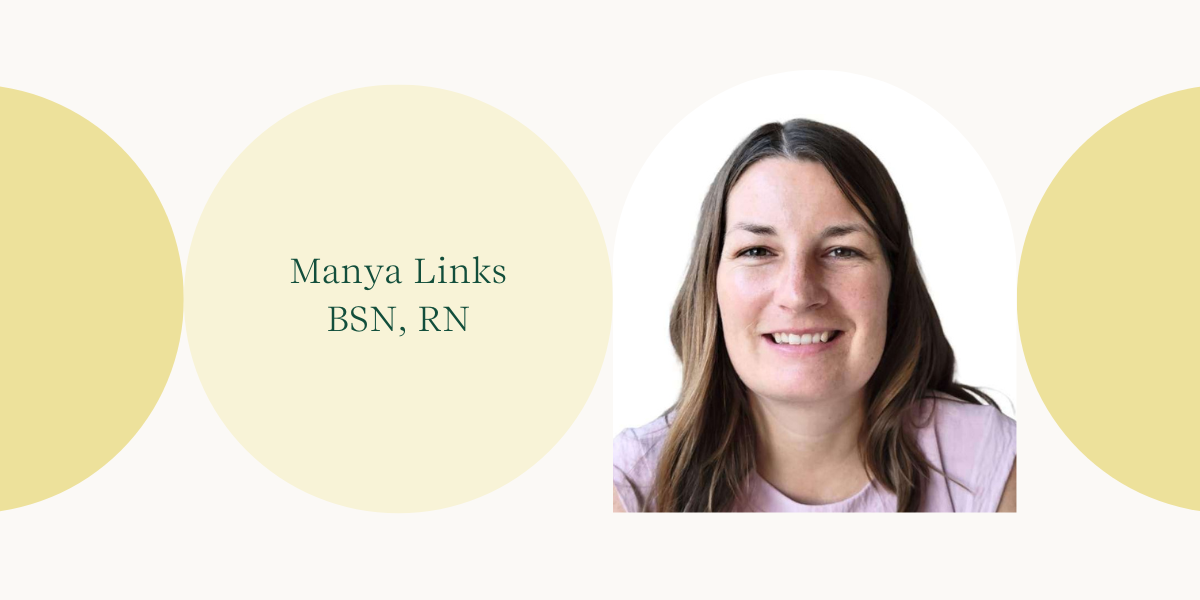Travel nursing in Canada has been on the rise since the pandemic. This upswing has allowed Canadian travel nurses to reap the benefits of an alternative nursing option that wasn’t as readily available in years past as it was in the United States. However, the U.S. travel nursing market is better established, far more ingrained in the healthcare system than in Canada and still in need of experienced nurses. Demand and the potential for lucrative wages make U.S. travel nursing popular among Canadian nurses. Vivian Health spoke with two Canadian travel nurses who made the jump across the border and recommend that you do, too.
The History of Travel Nursing in North America
Travel nursing emerged in the 1970s and has been a thriving part of U.S. healthcare for many years, aligning closely with the country’s privately funded healthcare system. It involves leaving your home area to work a temporary nursing job for a set period in a specific location. Experienced nurses travel to understaffed healthcare facilities nationwide to ensure patients receive quality care while exploring new places and potentially earning higher hourly wages and tax-free stipends.
Historically, the Canadian publicly funded healthcare system hasn’t relied on travel nurses. Although travel nursing has been available within Canada, it primarily focused on more remote northern provinces, territories and Indigenous reserves that are difficult to staff. However, travel nursing has evolved in Canada, with most hospitals staffing travel nurses.
Unfortunately, this momentum has slowed due to negative media attention, causing Canadian taxpayers to become alarmed by increased spending on agency nursing and painting them as a problem amongst most Canadians. The result has been capped wages and fewer benefits for Canadian travel nurses, causing uncertainty about the future of travel nursing.
Canada, the U.S. and Mexico have a special trade agreement, the North American Free Trade Agreement (NAFTA), that allows certain professionals to work across borders easily. NAFTA allows Canadian registered nurses (RNs) to acquire a Nonimmigrant NAFTA Professional (TN) Visa and begin U.S. travel nursing once they meet certain criteria. The opportunity to pursue U.S. travel nursing provides another avenue for Canadian nurses to explore.
RELATED: 8 Steps Canadian Nurses Must Take to Work in the U.S.
Why Should a Canadian Nurse Work in the U.S.?
Ultimately, Canadian nurses often come to work in the U.S. for the money and demand compared to Canada. The Bureau of Labor Statistics projects a 6% increase in demand for RNs in the U.S. between 2022 and 2032. As of August 11, 2024, Vivian Health had 117,580 travel nurse roles posted on our job marketplace, with new jobs added hourly. We spoke with two experienced Canadian nurses to get valuable insider details on why Canadian nurses should consider travel nursing in the U.S.

Manya Links, BSN, RN, has over 15 years of experience in the healthcare field, fearlessly taking on challenging contracts in demanding environments, including the Canadian Arctic. Over the years, she’s proven her resilience and adaptability. Manya has been travel nursing in the U.S. with her family for the past couple of years.
RELATED: Tips for How to Successfully Travel Nurse with Family

Kateri Muys, BN, RN, better known as Kat Ann, began her journey as a travel nurse in Canada, working in remote and northern communities. When she decided to pursue U.S. travel nursing as an operating room nurse in 2022, there were hardly any resources to guide her. To fill this gap, Kat Ann created the Canadian Travel Nurses (to the U.S.A.) Facebook group and the Canuk to Yankee guide specifically for Canadian travel nurses wondering how to enter the U.S. travel nursing world.
5 Key Differences Between Canadian and U.S. Travel Nursing

1. Travel Nurse Salary
Many Canadian provinces are limiting travel nurse salaries, with the government trying to put an end to travel nursing altogether. In British Columbia, wages are almost on par with staff nurses, and while accommodation and relocation costs are covered, per diems are often not provided. Travel nursing can still be lucrative in other provinces, but securing a contract is becoming more challenging.
Kat Ann says, “I know of a travel nurse who faced significant challenges with wages being cut across Canada. Her full-time job as a nurse wasn’t sufficient, which drove her to seek opportunities in the U.S.”
On August 11, 2024, Vivian’s salary data indicated the average weekly salary for a travel RN was $2,102 in U.S. dollars (USD), equal to $2,890 in Canadian dollars (CAD). For the rest of this article, we used Canadian dollars when discussing salary data based on conversion rates from August 11, 2024, when the exchange rate was 1 USD = 1.37 CAD.
Travel nurses could earn up to $13,700 CAD a week in Maine, up to $10,300 CAD in Vermont and up to $5,770 CAD in Maryland. Contracts in Canada aren’t usually anywhere near these rates. The salary structure in Canada differs from the U.S. for travel nursing. The wage is in an hourly format, tax-free per diem rates range from $30 to $75 CAD a day and the agency usually pays housing directly to the landlord.
A typical contract in Canada will offer around $3,500 CAD per week. We multiplied the offered hourly wage by 40 hours to calculate Canadian weekly rates and added the tax-free stipend. These rates excluded provided housing since Canadian nurses don’t receive these funds directly. Prince Edward Island had some better opportunities, with contracts reaching closer to $5,000 CAD per week. In remote areas like Nunavut, contracts are higher, potentially rising to $6,000 CAD weekly. Despite these high-paying opportunities, these contracts are becoming harder to find, and the housing benefits are usually shared accommodations, which is less than ideal.
2. Patient Workload and Culture
Canadian travel nurses working in the U.S. frequently point out how their workload is often heavier, with fewer breaks than back home. Manya discussed that the break culture can be brutal—there’s less emphasis on taking time for mental refreshment, which can feel draining. Even with these challenges, she has found that working in a more standardized corporate setting has made her a more thorough and confident nurse.
“It’s pushed me to consistently deliver comprehensive care, leading to better patient outcomes,” Manya said.
Travel nursing in the U.S. can bring different language and cultural barriers than in Canada because there’s more diversity in the U.S. Some regions have their own subculture, where people primarily speak languages other than English. Kat Ann described a situation where a travel nurse arrived in a community to find that most of the town and her patients spoke German.
Kat Ann offers another example of a nurse who arrived for a contract role to learn that it was a remote community, two hours from modern stores or the comforts of home. The social travel nurse found this assignment not a good fit. As the nurse, it’s your responsibility to understand where your contract is and if it’ll be a good fit for your wants and needs. A 13-week assignment can feel like a lifetime if it’s not the right fit.
3. Work and Hospital Environment
Kat Ann remembers feeling anxious before her first U.S. travel nurse assignment and worried that the nursing work would be completely different from that in Canada. She found gathering the necessary documents and getting everything together to work in the U.S. overwhelming and feared the job would be just as stressful.
“Thankfully, once I arrived, I just started nursing,” reflected Kat Ann. “That’s the easy part—I know how to nurse.”
Alternatively, Manya felt very well prepared thanks to the thorough onboarding process. She said it took about a week and included two days of classroom training, one day of computer charting and two buddy shifts to familiarize yourself with the unit.
“Charge nurses are incredibly supportive, checking in and ensuring you meet documentation expectations,” added Manya. “I always felt well-resourced and never lacked support.”
While discussing the different leadership roles and hospital culture, Manya said, “It’s been fantastic to witness younger generations advancing in corporate roles based on merit rather than just being part of an ‘old boys club’ where the longest-serving nurse gets the spot because of union rules.”
4. Peer Support Networks
While travel nurses in both countries often feel like outsiders in their temporary roles, travel nursing in a country other than your own may deepen that feeling. Establishing a support network can make the transition smoother for Canadian travel nurses moving to a new city in the U.S., but it isn’t always easy.
Kat Ann said, “Being a travel nurse means being friendly and social, but you’re still an outsider. Even if people like you at work, you might not get invited to social events like company golf tournaments. It’s like walking into different cliques—you’re friendly but not fully integrated.”
Other travel nurses may have different schedules or work all the time, making it difficult to connect. The online world has expanded a travel nurse’s ability to network.
Kat Ann created Tea & Tales, a monthly virtual meeting for travel nurses looking to connect with other travel nurses. Its purpose is to provide comfort and build a support network among Canadian travel nurses working in the U.S. Kat Ann noted that while the job provides professional growth opportunities, it can also get lonely. Finding ways to stay connected and engaged is crucial for emotional well-being.
5. Housing, Transportation and Insurance Logistics
“Managing logistics like housing and transportation can be similar to what you’d do in Canada,” said Kat Ann. “Look on Airbnb and message hosts for better deals or join local Facebook groups to find housing options. While agencies often offer housing solutions, finding your own can save you money and allow you to keep your stipend. You can often find more affordable options on your own.”
Canadian travel nurses heading to the U.S. should have additional travel health insurance to ensure comprehensive coverage. Also, the United States has higher traffic accident and fatality rates, even after taking into account the much higher population of the U.S. compared to Canada. If you’ll be driving, it’s a good idea to check with your car insurance provider to see if you need increased liability coverage and that you have the appropriate insurance to cover you as you travel.
RELATED: 10 Best Websites for Finding Travel Nurse Housing
U.S. Travel Nursing Tips for Success as a Canadian Nurse

Prepare for the Transition
Start by thoroughly researching your new location and workplace. Familiarize yourself with local resources, housing options and healthcare systems. Connecting with other travel nurses and joining relevant online communities can provide valuable insights and support.
Choose the Right Travel Nurse Agency
Select a travel nurse agency that aligns with your career goals and values. Kat Ann and Manya strongly encourage new Canada-to-U.S. travel nurses to make sure they have a recruiter who has previous experience helping Canadians obtain their first contract. Your recruiter needs to be well informed. If they aren’t, they may lead you through unnecessary steps, provide incorrect information or steer you in the wrong direction.
As a fellow Canadian travel nurse working in the U.S., I experienced this firsthand when an agency told me I could work in Hawaii, but I later learned I needed to complete an assignment in a state that didn’t require a social security number first. This mistake resulted in losing the non-refundable Hawaii nursing license fee.
Always look for agencies with a strong reputation, transparent communication and sound support systems. Ensure they offer competitive pay rates, comprehensive benefits and reliable housing and travel arrangements.
Budget for Unexpected Expenditures
Since travel nursing often comes with no sick pay, diligently planning and saving is crucial. Budget for regular and unexpected expenses, such as travel and health insurance. Setting aside an emergency fund and keeping track of your finances helps you manage the financial aspects of your assignments more effectively.
Maintain Personal Well-Being During Travel Nursing Assignments

To prevent loneliness and depression, it’s essential to maintain personal well-being throughout your assignments as a travel nurse.
Reflecting on her experience, Kat Ann said, “It was pretty lonely at times, even though I made friends with American nurses. One tip is to connect with other travel nurses through groups like Tea & Tales. Facetime and other virtual connections can also help bridge the gap when you’re far from home.”
Having projects to do on your days off, like knitting, crafting, writing or journaling, can keep you occupied. Kat Ann suggested bringing a pet or items that remind you of home to provide emotional support and create a sense of routine and normalcy. Keeping busy and in contact with friends and family from home helps prevent you from feeling like you’re just counting down the days to go home.
How to Find a U.S. Travel Nurse Job
For Canadian nurses considering the leap to the U.S., it’s essential to identify your specialty and target states where your skills are in high demand. A great way to start is to browse travel nursing jobs on the Vivian app. Vivian allows you to filter jobs by state, specialty and pay rate, helping you find positions that align with your career goals and financial expectations.
Excited about the prospect of crossing the border to work in the U.S.? Sign up for a Vivian account and download the Vivian app to explore travel nursing opportunities today










Is there an insurance company you would recommend?
Hello Mercedes and thanks for reaching out! Unfortunately, Vivian can’t recommend or endorse a specific insurance company. However, a good place to start your comparisons is the National Association of Insurance Commissioners (NAIC).